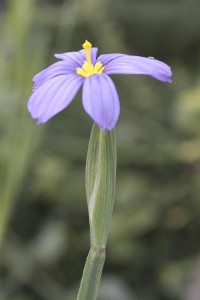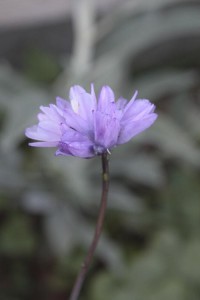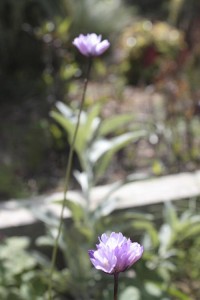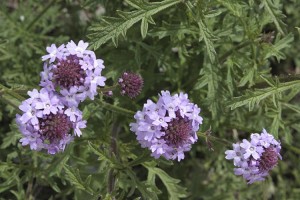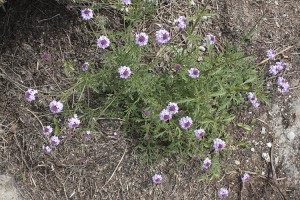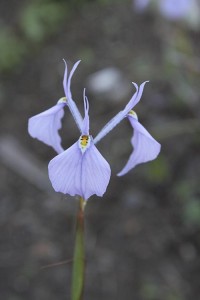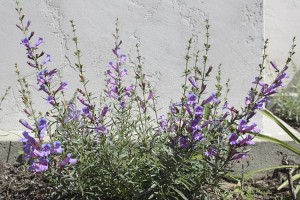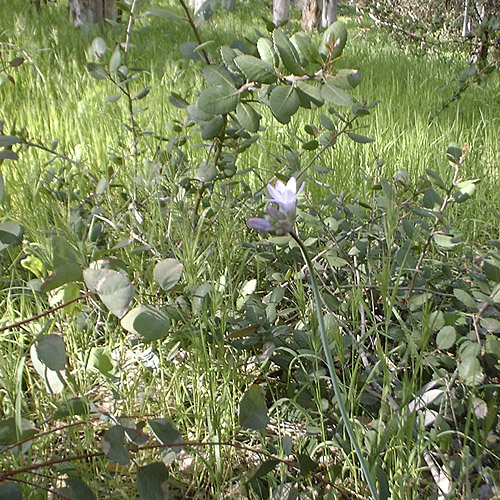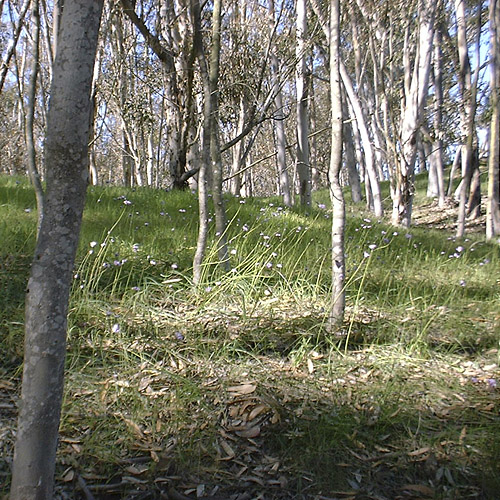For this Garden Bloggers’ Bloom Day I’ve picked some predominantly purple spring-flowering plants that are starting to do their thing in my garden. All but one of these are California (or Baja California) natives, and all would be seriously water-wise choices for the garden. Some would even make it through an entire summer without water, though they’d look just a little better with a sip once or twice a month.
Blue-eyed grass (Sisyrinchium bellum): What a great name for a great plant. This iris relative is happy coexisting in a moderately-watered garden with other plants, though they can stand drought. Here they are living alongside some chard and heliotrope.
Blue dicks (Dichelostemma capitatum) are common here near the coast and are one of our reliable signs that it’s spring. They self-sow and spread around the garden, but not obnoxiously.
Black sage (Salvia mellifera) is one of the local canyon plants that’s earned a place in the garden. In life the flowers are a slightly stronger pale mauve color than here in the photo. It’s just beginning to come into flower and should be a little more intense in a couple weeks. Though not one of the “look at me” sages, it’s still quietly beautiful.
Verbena lilacina originates in Baja. The plant shown here is just getting started. It should flower much of the year and require very little summer water.
This one’s maybe closer to blue than purple, the South African bulb Morea tripetala. I stuck it in a really dry spot, and it’s now probably just blooming on the reserves in the bulb. We’ll see how well it does after a season of tough love in the garden.
And with the last photo we come back to California with the justifiably ever-popular Penstemon Margarita BOP (sometimes sold as Penstemon heterophyllus ‘Margarita BOP’). The flowers are a wild mix of blue and magenta pink, giving the overall impression of purple. The open tubular flowers have something of the look of a foxglove which would require a certain amount of water, but this penstemon actually does just fine with almost no added water.
Thanks to May Dreams Gardens for hosting Garden Bloggers’ Bloom Day. Check out the page with glimpses into what’s blooming all around the world.

